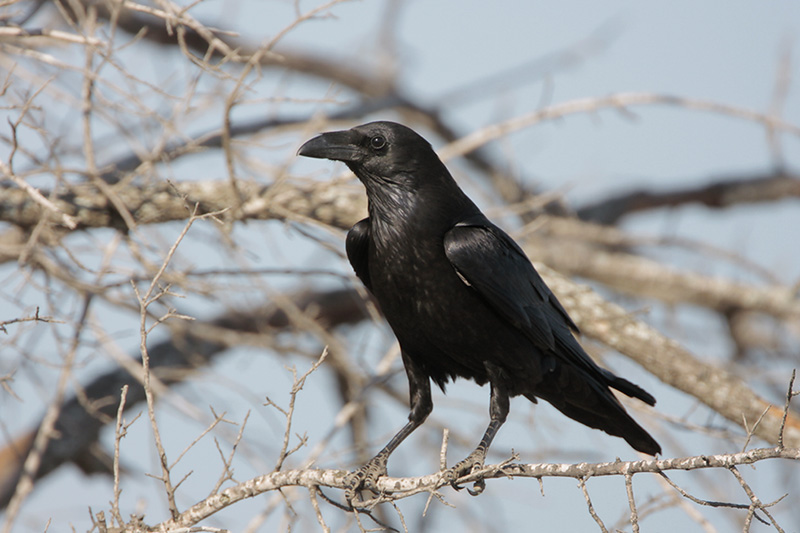
Raven is a prominent symbol in ancient and traditional cultures worldwide – and quite a controversial one.
Raven symbolism has been a notable subject for centuries – from announcing death to nurturing life, this mysterious and remarkable corvid has had various important cultural roles related to death, transformation, and foreseeing the future.
Time passes, cultures change and evolve, but ravens never stop intriguing and mesmerizing humans.
Let’s explore the raven as a symbol of both good and bad.
On this page
Spiritual Meaning & Symbolism
Ravens are commonly known for their relation to death and the underworld across various cultures.
The link to the other side is viewed quite differently depending on the civilization in question. While some consider ravens a bad omen and bringers of grim news, others see them as keepers of balance and transformative guides, as well as wise messengers and advisors.
The tendency of ravens to scavenge carcasses, their obvious intelligence, distinct loud calls (especially when spotting a dead body), and the glistening black color of the entire body all contributed to their perception asdeath notifiers and guides to the underworld.
Due to their real-world cleverness and the ability to mimic various sounds (including human speech), ravens are also a symbol of wisdom and have prophetic traits.
Related: The symbolism of black feathers
Lastly, in myths and legends, ravens sometimes have a trickster role and shape-shifting abilities. In Native American folklore, the raven is often depicted as a shape-shifter, capable of changing its form to interact with both humans and spirits.
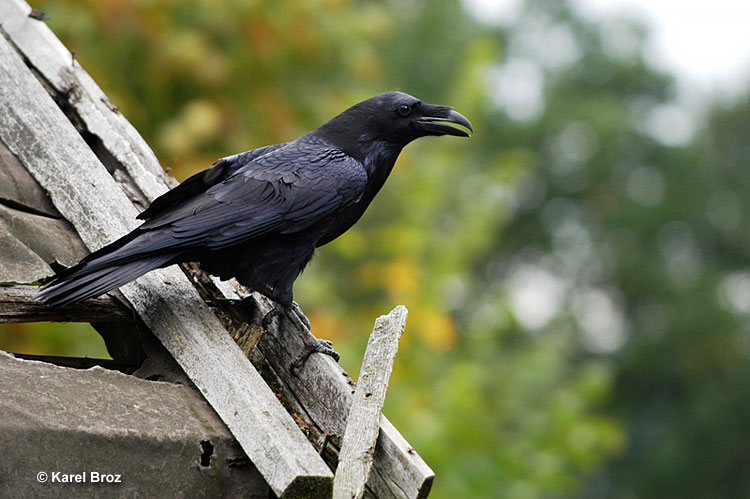
What does it mean when you see a raven?
In the world of symbols, seeing a raven can mean different things, depending on the belief system.
- Similarly to crows, ravens can announce or symbolize death or communication with the underworld.
- Ravens can be messengers from the spirit world or carrying prophetic revelations.
- Ravens can be a sign of wisdom and secret knowledge.
- Ravens can also be a good omen and a protective spirit.
However, the list is a simplification. We should delve deeper into raven meanings to get a clearer picture of this complex symbol.
Intelligence
Ravens are intelligent and adaptable creatures. The raven’s cleverness, problem-solving skills, tool use, playfulness, and ability to mimic human speech all give off its natural intelligence.
Human fascination with raven’s brain power was reflected in myths too. For example, in Norse mythology, we have Huginn and Muninn (“Thought” and “Memory”), the two ravens belonging to the wisdom god Odin. They provided Odin with knowledge and wisdom.
Foresight and Third Eye
Ravens not only symbolize foresight. They’re one of the rare animals that are provenly capable of it, processing past events to make future plans and even controlling impulses for the greater good down the road! Therefore, science has backed up the mythological and traditional view of ravens as seers (well, sort of).
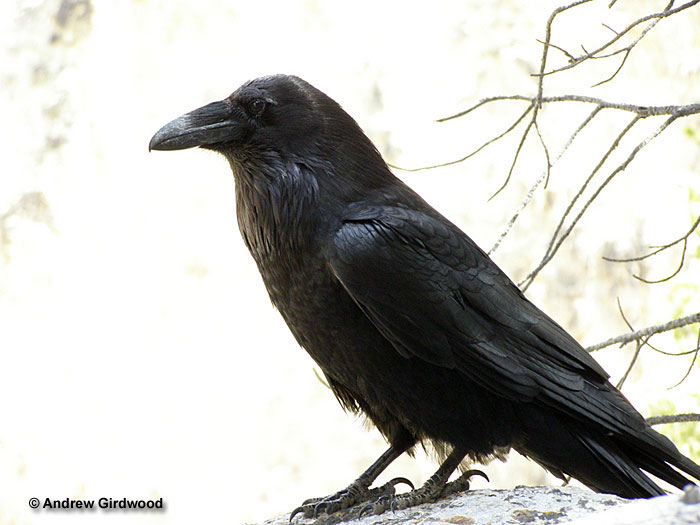
In some indigenous cultures, ravens’ intelligence crosses onto the other side of reality. These birds are believed to possess prophetic abilities. They could offer glimpses into the future or deliver messages from the spirits.
Their perceived “wisdom” makes them revered creatures, sought after for guidance and insight.
Likewise, in Celtic mythology, ravens are linked to the goddess Morrigan, associated with battle, fate, and prophecy. She would send ravens as messengers to deliver prophetic warnings or omens of impending events, allowing foresight.
Also, the Greek god of prophecy Apollo (and his powers) were also associated with ravens.
The Three-Eyed Raven
Today’s folks probably know the Three Eyed-Raven as a character from Game of Thrones, known for his extraordinary abilities to do time travel and tell past, present, and future.
However, the concept is not novel – the symbol of the three-eyed raven has been long-present in occult belief systems.
Related: What is a group of ravens called?
The three eyes of this raven stand for (you’ve guessed it) the past, present, and future. It’s a mystical entity able to transcend time and space, revealing secret knowledge to the ones they guide.
Thus, the idea of a three-eyed raven has quite a few parallels with the ancient concept of the Third Eye – a spiritual eye or chakra located in the center of human heads and linked to spiritual awakening and communication, as well as increased perception and awareness.
Transformation
Ravens are often regarded as symbols of transformation. That has likely occurred in various cultures simultaneously due to observing the birds’ real-world adaptability and probably the widespread scavenging behavior that catalyzes the cycling of matter and life itself.
Learn more: Symbolism of Birds
The mysterious presence has long been associated with transition, metamorphosis, and the crossing of frontiers, including crossing into another world – an afterlife.
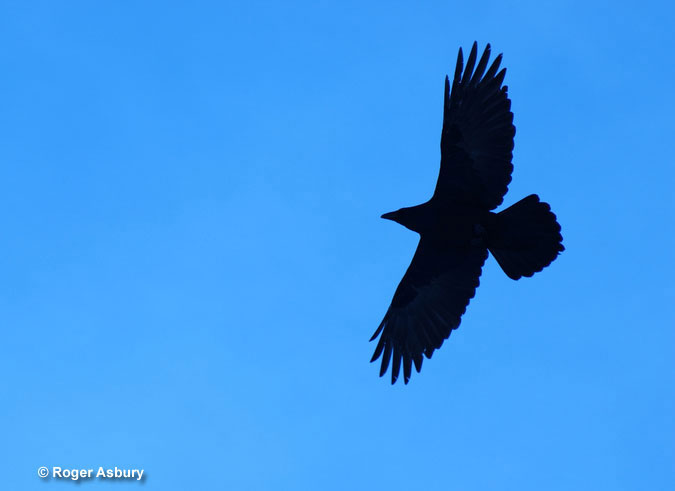
In some indigenous cultures, ravens are believed to possess shape-shifting abilities, transforming their form to interact with human and spirit realms as needed.
That’s true for the Inuit mythology, where ravens have a prominent role in creation. They brought light to the world, possessed the ability to shape-shift, and delivered messages as guidance from the spirits.
We can conclude that the transformative nature of the raven in ancient beliefs is often a metaphor for personal growth, evolution, and the potential for profound change.
Ravens On The Crossroads of Life and Death
Although ravens are often a grim presence and a bad omen in many Christian and Post-Christian societies, that hasn’t been the case in the holy scriptures.
People often forget ravens had an extremely prominent and positive role in the story of Prophet Elijah from the Bible’s Old Testament.
The “God’s birds” – ravens – brought the prophet daily sustenance of bread and meat in difficult times when he hid in the cave to protect his life and sacred mission. They effectively saved Elijah from starvation.
Again, ravens stand at the crossroads of life and death, but this time defending life with their divine-driven actions. The legend reflects other belief systems where ravens inhabit both life and death realms.
Love, Partnership, and Loyalty
Raven pairs seem to mate for life and are known for their strong attachment. They often engage in “romantic” behaviors to boost their bond. Feeding and preening each other and making soft noises are common in the raven couple’s daily routine.
Did you know? There is a NFL team named after ravens!
That is why ravens can also symbolize loyalty and dedication in love, or love against all odds.
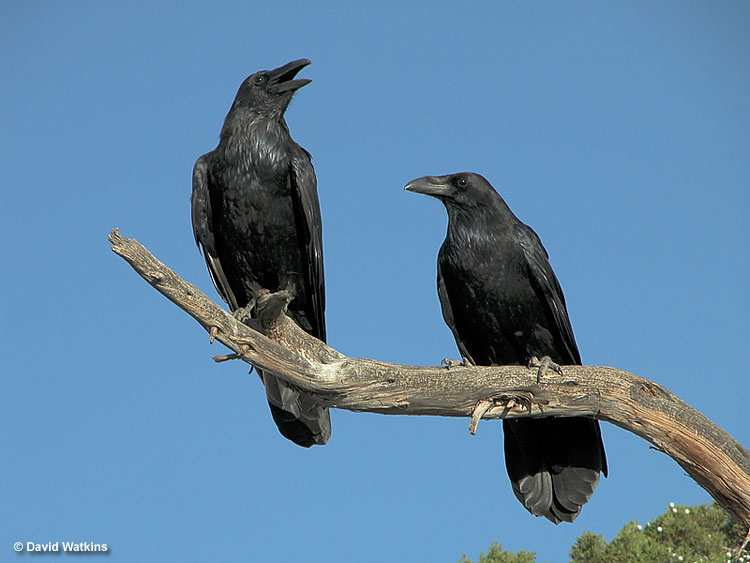
Raven Tattoo Meaning
Raven is one of the most powerful bird tattoos you can get. Besides the meanings directly connected to raven symbolism – transformation, knowledge, shape-shifting, adaptation, and wisdom – there are additional possible meanings of raven tattoos.
- A tattoed raven can act as a symbolic protector of the wearer. This notion comes from the fact that ravens often watch over humans, representing an observant, guarding spirit.
- Due to their dark and mysterious allure, a raven tattoo can also convey a Jungian shadow – an unconscious and repressed part of our psyche according to Carl Gustav Jung.
- Because they’re often associated with magical powers, the raven tattoo might be attractive to people interested in magic and witchcraft.
- Tattooing a raven couple can symbolize undying, eternal love.
People also get tattoos of ravens for purely aesthetic reasons, which is especially noticeable in certain subcultures such as gothic, rock’n’roll, or punk.
Read more: Bird Tattoo Meanings & Ideas
Raven Symbolism – Frequently Asked Questions
What is the spiritual meaning of a raven?
As a spirit, the raven can symbolize intelligence, adaptability, wisdom, transformation, foresight, the underworld, the mystery of life and death, balance, and the enigma of god’s will.
Is a raven a good omen?
What sort of omen is a raven depends on who you ask.
In European cultures, ravens and crows have been mainly associated with death, mystery, and wisdom – perhaps the best portrayed in Edgar Alan Poe’s poem “The Raven.” Due to morbid associations, many Europeans (and their descendants worldwide) consider ravens a bad omen.
Things are brighter in other ancient cultures. In many native communities, ravens predominantly act as messengers of the divine and the spirit realm, as well as life teachers. Therefore, they are considered neutral or a good omen.
What does it mean if a raven visits you?
Again, the meaning of raven visitation depends on the culture. As ravens are connected to all realms of time – past, present, and future, the raven is often seen as a messenger wise messenger who transcends time and realms of reality. Are you anticipating an epilogue of some life situation? The raven may be bringing you a sign of a resolution.
However, if you’re not superstitious, you may be able to appreciate a raven visitation as a natural wonder. By interacting with your surroundings, the bird is showing its natural intelligence and curiosity.
They want to explore your yard and see what’s up. Some people have even managed to befriend their visiting ravens!
What is the superstition around ravens?
Superstitions around ravens can be astonishingly different.
In some systems, like the Indo-European folklore and modern Western beliefs, the raven is often a bad omen, bringing grim news about deaths or other undoings.
Quite contrastingly, in many Native American cultures, the raven is a good omen connected to wisdom, balance, and transformation. Due to their sometimes mischievous nature, the natives sometimes portrayed these birds as tricksters that could teach people a lesson.
How do ravens send messages?
Ravens truly send messages only in the realm of our myths, having a prominent role as messengers across various cultures.
Most commonly, ravens are messengers from the divine and intermediaries between the human and spiritual realms. Frequently, they bring warnings and omens to gods and humans alike.
According to Celtic legends, the goddess Morrigan would send ravens as messengers to deliver prophetic warnings or omens of upcoming events.
In a Serbian legendary epic poem, The Death of the Mother of the Jugovitch, two ravens soiled with blood bring to a lady a hand of her beloved killed in battle, becoming the first to bring in the news of the heroic deaths of nine noblemen brothers.
While the poem’s content is a legend, there may be a grain of truth hidden in there. Ravens are scavengers; seeing them flying in circles and vocalizing usually announces there is a dead creature on the ground underneath.
People of the past had probably observed them in the battleground’s proximity, bloodstained or even carrying human remains. That could have been a physical sign of the battle’s end.
Conclusions
Ravens hold a prominent place in the global pantheon of mythical creatures. However, the raven symbolism is often perplexing and oppositional. The controversy is likely the consequence of contrasting real-life traits. On the one hand, we can observe fantastic intelligence and romantic loyalty; on the other, there is the dark appearance and grim scavenging feeding habits.
Thus, raven symbolism varies across cultures, encompassing death and the underworld, prophecy and wisdom, deception and transformation.
Whether you consider them spirits of darkness or light, destruction or creation, one thing is sure – ravens have become powerful archetypes deeply embedded in the human psyche, history, and mythology.

Aarron
Monday 25th of December 2023
Thay follow me